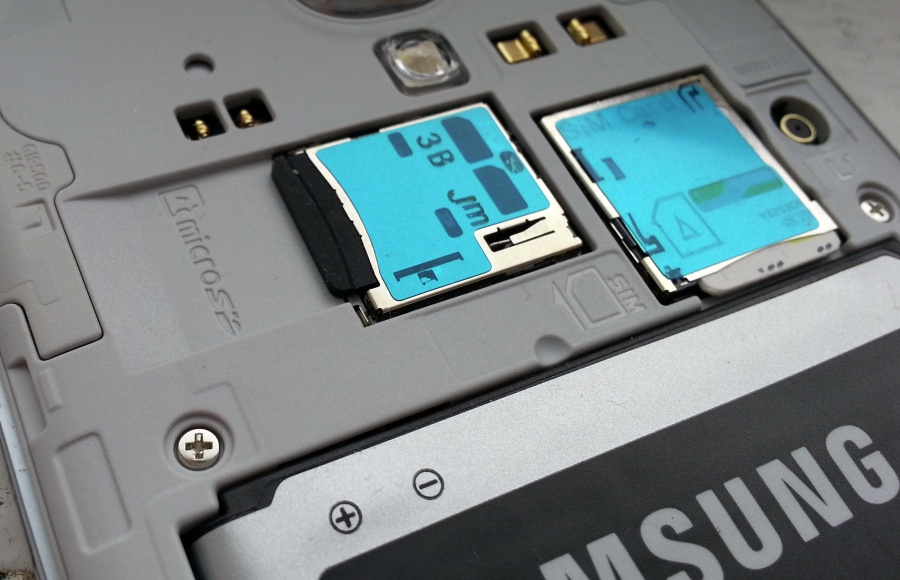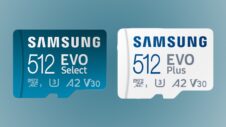“I use my microSD card to store movies and music locally to save on my data usage and expenses,” we’ve heard many Samsung customers say to us here at SamMobile. And we understand, we really do. Samsung’s devices have been seen as “PCs in your pocket,” mobile computers that allow you to do anything you want to. And, of course, what good is a device that claims to be a “PC” but doesn’t provide PC-like storage?
Of course, keep in mind that 128GB of storage, while more than enough for most consumers, doesn’t fit the needs of storage-hungry users who want to store everything locally. On this front, perhaps 256GB of storage would be enough…or 512GB…or 1TB of storage. LG’s G4 provides up to 2TB of local storage with its microSD card slot (card not included, of course) – but once you consume all that storage space, you’ll want 3TB or 4TB. It seems as though the higher local storage rises, it’ll never be enough. It is, in short, an ad infinitum desire that is the equivalent of chasing the sand: no matter how many grains of sand (or, in this case, memory storage) you hold in your hands, you’ll always want more. Thus, microSD cards are nothing more than a band-aid on a wound: it may help the wound and give a little relief, but it doesn’t do away with the ultimate problem – the wound itself. Storage will always be a problem, even in a world full of microSD cards and slots.
This past week, we saw a Sprint Galaxy Note 5 placeholder that claims Samsung will provide a microSD card slot in the Note 5 experience. The document may be just a placeholder, as we’ve reiterated to our faithful readership, but it could also be true. We’ve not heard anything from Samsung regarding the decision to maintain the microSD card slot, so, as always, we want you to take the Sprint placeholder form with a grain of salt (the smaller, the better). And Samsung could very well come up with a way to maintain the existence of the microSD card slot alongside of UFS 2.0 storage, but then and again, in tech, anything is possible. We want to prepare our readers in case there is no microSD card slot, though we’ll take a microSD card slot as long as the Galaxy Note 5 performs equal to or better than the Galaxy S6 and S6 edge that lack the feature.
At this point, though, it must be said: should Samsung bring back the microSD card slot to the Galaxy Note 5 as it has done with Note devices past and present? Samsung would be catering to customers who’ve been quite vocal about their disapproval of Samsung’s trend-setting UFS 2.0 storage that eliminates external storage. Catering to customers is a short-term win for Samsung and customers – but it won’t last. Samsung’s next “Galaxy” will render microSD cards obsolete.
What is Samsung’s “Galaxy”? And how do microSD cards fit into it?
When someone refers to “Samsung’s ‘Galaxy,’” the first thing that comes to mind for our readers (and quite naturally so) is Samsung’s Galaxy S and Galaxy Note smartphones. However, the Galaxy smartphone series is not the target here, although the next Galaxy (the Galaxy Note 5) may prove this interpretation to be true; rather, the word “Galaxy” here refers to “the next big thing,” the next “tech world” to be encountered, the next horizon to embrace. Samsung has always been about chasing “the next big thing,” and its commercials always embrace that slogan.
But keep in mind that Samsung embraces “the next big thing” slogan because it is a tech company that always wants to provide cutting-edge tech for its customer base. Take the Galaxy S6 edge’s wireless charging, for example. Currently, a number of places worldwide offer wireless charging within their establishments – although the concept of wireless charging is still new and strange for most customers. Samsung’s decision to implement wireless charging had nothing to do with wanting to alienate its removable battery-loving customer base, but instead, wanting to usher its customers into futuristic tech so that, five years from now when wireless charging does turn mainstream, Samsung can be seen for the pioneer and trendsetter the company is today.
Wider displays are another, more familiar example. Apple bucked against the wider display trend for the last few years, but finally caved in after seeing customer demand year after year for wider displays. The joke back a few years ago was that Samsung wanted to “put tablets next to our ears,” but Google (Nexus 5, Nexus 6), Motorola (Moto X), LG (G3, G4), in addition to archrival Apple (iPhone 6 Plus), have all followed the trend. And now, according to new rumors, Apple’s looking to prepare an iPad Pro with a stylus to match what Samsung (Galaxy Note 10.1 2014, for example) has done in its tablet experience. The iPad Air will likely see a small, incremental upgrade in specs and design this year, simply because Apple has better things – or, should I say, larger things like the iPad Pro – in its sights.
These are “Galaxies” that Samsung has already conquered, but Samsung’s next “Galaxy” concerns the microSD card and card slot.
The next “Galaxy” will render SD cards obsolete
MicroSD cards are famous for their massive storage capabilities, and they have become a favorite among the Samsung faithful. The idea of storing your Google Play movies and music onto your Galaxy Note 4, for example, without worrying about a data connection or Wi-Fi is a staple treasure of many a Samsung customer.
At the same time, however, keep in mind what I said above: Samsung is a tech company. Yes, they’re in a consumer-driven market where consumer needs and preferences must be taken into account (companies can’t make money if they don’t consider their customers); however, Samsung is a tech company for a reason. Its goal is to drive technology forward, to take us into the next frontier of technological progress before other companies. It’s why the company pushed wider displays, called “phablets,” before other companies did; why the company’s pushed its stunning AMOLED displays, and even smartwatches in the current market. It’s why Samsung’s also pushed mobile photography and videography from HD (720p) to Full HD (1080p) to Ultra HD resolutions. The Korean manufacturer hasn’t done it with the goal of copying other companies, contrary to disgruntled claims, but because it has a strong belief in technology and its benefits and wants to be a leader in the right direction.
MicroSD cards have been a trend for a long time, but they are on their way out. You can see this with Samsung’s 5G wireless push, in which the company hopes to combine Wi-Fi and LTE to create a faster, wireless network. Why is Samsung pushing wireless tech? Because the future “Galaxy” the Korean manufacturer conquers will be one in which wireless is the sum total of everything; everything will be wireless, including our movies, photos, music, and so on. In other words, remote access has greater potential to make use of 5G wireless speeds, as opposed to microSD card slots that don’t really mandate wireless data speeds at all.
Wireless speeds mandate the use of remote access to data, a feat that can best be accomplished by way of cloud storage. And even Google is moving in this direction: why would Google offer Google Drive cloud storage in the first place if Android’s owner didn’t agree with the move to cloud storage? And as for Android M, don’t get your hopes up: yeah, Google will allow you to still have your microSD card, but your microSD card will be encrypted and restricted to only one device. That restriction is not the wave of the future, but a sign of the nostalgic past – despite its benefits. Google’s move to encrypt microSD cards shows that even Mountain View considers microSD cards as a security risk (it’s like someone who fixes a roof leak because he or she foresees a flooded home should it rain six inches or more tomorrow).
MicroSD cards stem from a time when desktop computers were the way everyone lived, in which you had a local hard drive and CD-ROM discs on which to store your files, photos, and other information. Desktops are not yet obsolete, but they are on their way out because of the portability of mobile devices.
With mobile becoming the present wave of tech, the future is only going to make us more mobile. Samsung’s next frontier or next “Galaxy” is all about removing our dependence on local storage as the “ultimate” storage space, and taking us to a place where the cloud frees us to be anywhere at any time with access to everything. It is what being truly mobile is all about. MicroSD cards and card slots do not fit into what it means to be truly mobile or truly wireless. Instead, they are reminiscent of the PC era in which desktops and laptops reigned supreme. Lastly, the company known for its Knox security (on which Google’s Android for Work is based) is one that would know about the security risks that microSD cards pose to current Galaxy S and Note users.
In short, Samsung’s newest campaign with the Galaxy S6 and S6 edge says it all: “the future is now.” What does this mean for Samsung users? It means that the future of wireless technology, the cloud, is now, a present part of Samsung’s vision. While you may want cloud technology to wait for about 5 years, it’s not going to. Samsung is pushing forward with it now, and the Galaxy Note 5 could be the first device to turn the tide. As we’ve stated time and time again, Incipio’s new microSD card case will only serve Samsung’s purpose: to eliminate microSD card slots as a necessary component of smartphone hardware.
Companies that wait for 3-5 years before debuting trending technology aren’t doing the hard work – they’re simply soaking up the customer sales, which is no different than a student who gets the math answer right because he picks answer 4 after watching three other students wrongly guess answers 1, 2, and 3. That’s not Samsung. Companies that stand on the sidelines and wait until others try and fail before capitalizing on their mistakes may be popular, but they’re not innovative.
And Samsung is more concerned with being innovative.






